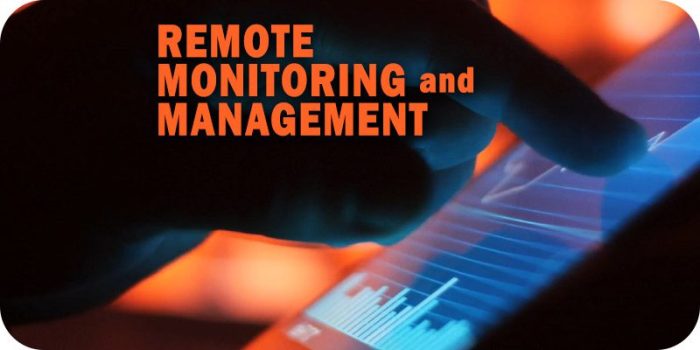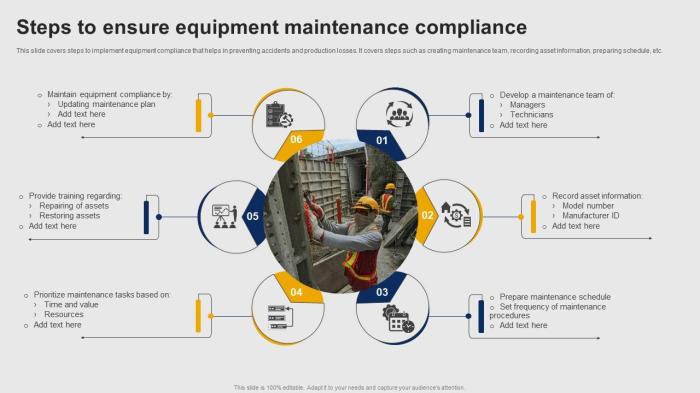Top RMM vendors offering comprehensive security features and threat detection are crucial in today’s complex cybersecurity landscape. This deep dive explores the essential security features, threat detection methods, and vendor comparisons to help you choose the best RMM solution for your needs. We’ll uncover how these platforms integrate with other security tools and analyze real-world examples demonstrating their effectiveness in preventing breaches.
Get ready to navigate the world of robust RMM security and discover how to bolster your organization’s defenses.
From basic antivirus to advanced behavioral analysis, the features offered by RMM vendors vary significantly. Understanding these differences is paramount in selecting a solution that aligns with your specific security requirements and budget. We’ll examine the strengths and weaknesses of leading vendors, highlighting their unique approaches to threat detection and mitigation. This detailed analysis will empower you to make informed decisions and significantly improve your organization’s overall security posture.
Defining “Comprehensive Security Features” in RMM: Top RMM Vendors Offering Comprehensive Security Features And Threat Detection
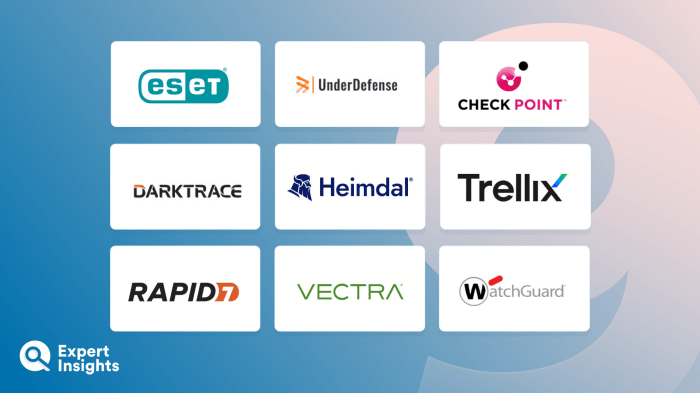
Remote Monitoring and Management (RMM) software has evolved beyond basic endpoint management. Today, robust security is a core requirement, and choosing an RMM solution necessitates a thorough understanding of its security capabilities. A truly comprehensive security suite goes beyond simple antivirus; it proactively protects against a wide range of modern threats.
The definition of “comprehensive security features” in RMM is multifaceted. It encompasses a layered approach to security, integrating preventative measures, detection capabilities, and response mechanisms. This ensures that systems remain protected from both known and emerging threats, minimizing downtime and data breaches.
Essential Security Features in Comprehensive RMM Solutions
A comprehensive RMM solution should include a robust set of security features to protect managed endpoints effectively. These features work in concert to provide a layered defense strategy. The absence of any of these key features can significantly weaken the overall security posture.
Essential features typically include:
- Antivirus and Anti-malware: Real-time protection against known and emerging threats, including signature-based and heuristic detection.
- Endpoint Detection and Response (EDR): Advanced threat hunting capabilities, behavioral analysis, and automated response to malicious activity.
- Vulnerability Scanning and Patch Management: Regular scans to identify vulnerabilities and automated patching to remediate identified weaknesses.
- Firewall Management: Configuration and monitoring of firewalls to control network traffic and prevent unauthorized access.
- Data Loss Prevention (DLP): Mechanisms to prevent sensitive data from leaving the network without authorization.
- Intrusion Detection and Prevention Systems (IDS/IPS): Monitoring network traffic for suspicious activity and blocking malicious attempts.
- Security Information and Event Management (SIEM) Integration: Centralized logging and analysis of security events across the managed environment.
- User and Access Control: Granular control over user permissions and access to sensitive data and systems.
- Remote Wipe and Lockdown: Ability to remotely wipe or lock down compromised devices to prevent further damage.
Basic vs. Advanced Security Features
The distinction between basic and advanced security features often lies in the level of automation, proactive threat hunting, and response capabilities. Basic features typically focus on reactive measures, such as virus scanning and basic patch management. Advanced features, however, employ proactive techniques like behavioral analysis, threat intelligence feeds, and automated incident response.
For example, a basic RMM might offer only signature-based antivirus, while an advanced solution would incorporate machine learning and behavioral analysis to detect zero-day threats. Similarly, basic patch management might involve manual updates, whereas advanced solutions automate the entire process, minimizing the window of vulnerability.
Comparison of Security Feature Sets Across Leading RMM Vendors
The following table compares the security feature sets of three leading RMM vendors – these are illustrative examples and specific features may vary based on licensing and configuration. Always consult the vendor directly for the most up-to-date information.
| Vendor | Feature | Description | Advanced Options |
|---|---|---|---|
| Vendor A (Example: Datto RMM) | Antivirus | Real-time protection against malware. | Integration with multiple antivirus engines, automated remediation. |
| Vendor A (Example: Datto RMM) | Patch Management | Automated patching of operating systems and applications. | Prioritization of critical patches, vulnerability scanning integration. |
| Vendor A (Example: Datto RMM) | EDR | Detects and responds to advanced threats. | Behavioral analysis, threat hunting, automated incident response. |
| Vendor B (Example: ConnectWise Automate) | Antivirus | Real-time protection against malware. | Integration with multiple antivirus engines, automated remediation. |
| Vendor B (Example: ConnectWise Automate) | Vulnerability Scanning | Identifies security vulnerabilities on endpoints. | Automated remediation recommendations, integration with patch management. |
| Vendor B (Example: ConnectWise Automate) | Remote Access | Secure remote access to endpoints. | Multi-factor authentication, session recording. |
| Vendor C (Example: Kaseya VSA) | Patch Management | Automated patching of operating systems and applications. | Prioritization of critical patches, vulnerability scanning integration. |
| Vendor C (Example: Kaseya VSA) | DLP | Prevents sensitive data from leaving the network. | Customizable data loss prevention policies, reporting and alerts. |
| Vendor C (Example: Kaseya VSA) | SIEM Integration | Centralized logging and analysis of security events. | Integration with various SIEM platforms, custom dashboards. |
Threat Detection Capabilities of Top RMM Vendors
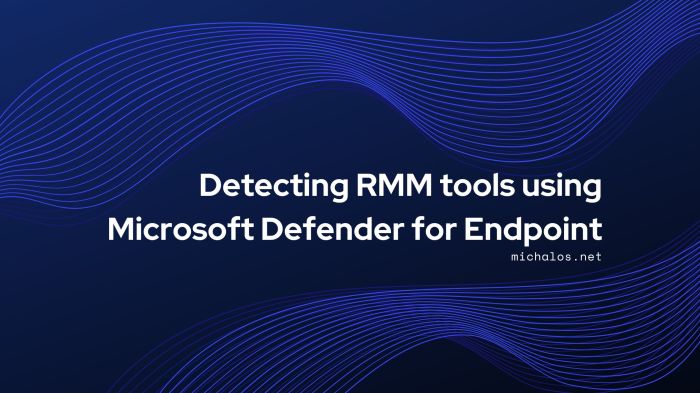
The ability to proactively identify and mitigate threats is paramount in today’s complex IT landscape. Leading Remote Monitoring and Management (RMM) vendors understand this, integrating robust threat detection capabilities into their platforms to safeguard businesses from increasingly sophisticated cyberattacks. These capabilities go beyond simple antivirus; they leverage a multi-layered approach combining various detection methods for comprehensive security.
Modern RMM solutions don’t just react to threats; they actively hunt for them. This proactive approach involves employing a range of techniques, from analyzing system behavior to leveraging external threat intelligence feeds. The sophistication of these threat detection systems varies between vendors, influencing their effectiveness and the breadth of threats they can identify and neutralize. Understanding these differences is crucial for businesses seeking the best protection for their valuable data and infrastructure.
Threat Detection Methods Employed by Leading RMM Vendors
Leading RMM vendors typically utilize a combination of signature-based, heuristic, and behavioral analysis methods for threat detection. Signature-based detection relies on identifying known malware signatures, acting like a digital fingerprint. Heuristic analysis examines code behavior for suspicious patterns, flagging potentially malicious activities even without a known signature. Behavioral analysis goes further, monitoring system activity for deviations from established baselines, indicating possible compromises.
For instance, a sudden spike in network traffic or unusual file access patterns might trigger an alert. This layered approach ensures that even novel or zero-day threats can be identified and addressed.
Specific Threat Detection Capabilities of Various RMM Vendors
The specific threats detected and mitigated vary slightly between vendors, reflecting their unique algorithm designs and threat intelligence integrations. However, most top-tier RMM platforms are equipped to detect and respond to a wide range of threats, including malware (viruses, ransomware, trojans), phishing attempts, vulnerabilities (both software and configuration-based), and unauthorized access attempts. Some vendors offer specialized modules for specific threat types, such as advanced persistent threats (APTs) or cryptojacking detection.
For example, a vendor might leverage machine learning to identify subtle behavioral anomalies indicative of an APT campaign, while another might focus on real-time detection of ransomware encryption activities.
Enhance your insight with the methods and methods of measuring the ROI of an ERP system investment over a five-year period.
Utilizing Threat Intelligence Feeds for Enhanced Detection
Many leading RMM vendors integrate threat intelligence feeds from various sources, including reputable cybersecurity firms and government agencies. These feeds provide up-to-the-minute information on emerging threats, allowing the RMM platform to proactively identify and block known malicious IP addresses, URLs, and file hashes. For example, if a new ransomware variant is identified and its hash is added to a threat intelligence feed, the RMM system can instantly flag any systems attempting to access or execute that file.
This proactive approach significantly enhances the effectiveness of the RMM solution’s threat detection capabilities and reduces the response time to emerging threats. The integration of threat intelligence enhances the accuracy and timeliness of threat detection, making the RMM solution more effective in preventing and responding to cyberattacks.
Vendor Comparison
Choosing the right RMM (Remote Monitoring and Management) vendor is crucial for businesses aiming to bolster their cybersecurity posture. This comparison focuses on five leading RMM providers, analyzing their security features, threat detection capabilities, pricing, and scalability to help you make an informed decision. We’ll cut through the marketing jargon and provide a clear, concise overview.
This comparison considers several factors including the breadth and depth of security features offered, the sophistication of threat detection methodologies employed, and the overall effectiveness in safeguarding against modern cyber threats. Pricing models and scalability are also key factors influencing the suitability of a particular RMM solution for different organizations.
RMM Vendor Security Feature and Threat Detection Comparison, Top RMM vendors offering comprehensive security features and threat detection
The following table provides a comparative analysis of five prominent RMM vendors, evaluating their security features, threat detection methods, and assigning an overall security rating. The rating is a subjective assessment based on a combination of feature richness, detection accuracy, and overall effectiveness in real-world scenarios. A higher rating indicates a more robust and comprehensive security solution.
| Vendor | Security Features | Threat Detection Methods | Overall Security Rating (1-5) |
|---|---|---|---|
| Datto RMM | Antivirus integration, patch management, endpoint detection and response (EDR), vulnerability scanning, security information and event management (SIEM) integration. | Anomaly detection, signature-based detection, behavioral analysis, heuristic analysis. Leverages machine learning for improved threat identification. | 4 |
| ConnectWise Manage | Automated patching, security audits, vulnerability scanning, endpoint protection integration, remote access control. | Real-time monitoring, event logging, alert notifications, integrates with third-party security tools for advanced threat detection. | 3.5 |
| Autotask PSA (now part of Datto) | Similar security features to Datto RMM, but often delivered as part of a broader PSA (Professional Services Automation) suite. | Relies heavily on integration with third-party security solutions for advanced threat detection capabilities. | 3.5 |
| NinjaOne | Patch management, endpoint detection and response (EDR), vulnerability scanning, remote access control, antivirus integration. | Behavioral analysis, anomaly detection, utilizes machine learning for threat prediction and prevention. | 4 |
| Atera | Antivirus integration, patch management, remote access control, vulnerability scanning, basic security auditing. | Real-time monitoring, alert notifications, relies more on reactive security measures than proactive threat hunting. | 3 |
Note: The ratings are based on publicly available information and industry analysis. Actual performance may vary depending on specific configurations and usage.
Vendor Strengths and Weaknesses
Each vendor possesses unique strengths and weaknesses concerning their security features and threat detection capabilities. Understanding these nuances is critical for selecting the most appropriate solution for your specific needs and budget.
For example, Datto RMM and NinjaOne generally receive high marks for their integrated EDR capabilities and proactive threat detection, while Atera’s strengths lie in its ease of use and affordability, but its threat detection capabilities are less advanced. ConnectWise Manage, while a robust platform, might require additional third-party integrations for comprehensive security.
Pricing and Scalability
Pricing models for RMM solutions vary significantly across vendors, typically based on the number of managed devices, features included, and support level. Scalability is another important consideration, particularly for businesses experiencing rapid growth. Some vendors offer more flexible and scalable pricing structures than others.
Many vendors offer tiered pricing plans, allowing businesses to select the features and support levels that best meet their needs. It’s essential to carefully review each vendor’s pricing and scaling options to ensure they align with your current and future requirements. Consider factors like the cost per device, contract terms, and potential costs associated with scaling up or down as your needs change.
Integration with Other Security Tools
Seamless integration with other security tools is crucial for a robust and effective cybersecurity posture. Leading RMM vendors understand this, offering various integration points that enhance threat detection, incident response, and overall security management. These integrations allow for a unified view of the IT landscape, streamlining workflows and reducing response times to security incidents.The power of RMM lies not just in its individual capabilities, but in its ability to act as a central hub, connecting disparate security tools and enabling a more holistic approach to security.
This interconnectedness creates a powerful synergy, significantly improving the effectiveness of each individual tool. By leveraging these integrations, organizations can automate responses, gain deeper insights into threats, and ultimately strengthen their defenses.
RMM Integrations with SIEM, EDR, and SOAR
Leading RMM platforms often boast robust APIs and pre-built integrations with Security Information and Event Management (SIEM) systems, Endpoint Detection and Response (EDR) solutions, and Security Orchestration, Automation, and Response (SOAR) platforms. These integrations allow for the automated exchange of critical security information, facilitating faster incident response and improved threat hunting capabilities. For instance, a detected malware infection by an EDR solution can trigger an automated response through the RMM, such as isolating the affected endpoint or initiating a remediation script.
Simultaneously, the event can be logged in the SIEM for further analysis and reporting, providing a comprehensive audit trail. SOAR tools can then automate the entire incident response process, from initial detection to containment and remediation, significantly reducing manual effort and response times.
Hypothetical Security Incident Scenario
Imagine a scenario where a phishing email delivers ransomware to a user’s workstation. The EDR solution detects the malicious activity, flags it as a critical threat, and immediately alerts the RMM. The RMM, in turn, automatically isolates the infected workstation from the network, preventing lateral movement. Simultaneously, the RMM pushes a script to initiate a system scan and identify the extent of the infection.
This information is then forwarded to the SIEM for detailed logging and correlation with other security events. The SOAR platform, receiving input from the RMM and SIEM, automatically launches a playbook that includes actions such as initiating a forensic investigation, restoring the workstation from a backup, and updating the organization’s security policies to prevent similar attacks in the future.
Improved Security Posture and Incident Response Time
The integration of RMM with other security tools leads to a demonstrably improved security posture and significantly faster incident response times. For example, the automated isolation of infected systems, enabled through RMM integration with EDR, can prevent widespread infection within minutes, minimizing potential damage. The automated response capabilities of SOAR, fueled by information from the RMM and SIEM, reduce manual effort and human error, enabling faster remediation and recovery.
Furthermore, the centralized logging and reporting capabilities facilitated by SIEM integration offer improved visibility into security events, enabling more effective threat hunting and proactive security measures. The overall effect is a more resilient and responsive security architecture, capable of handling threats more effectively and efficiently.
Case Studies
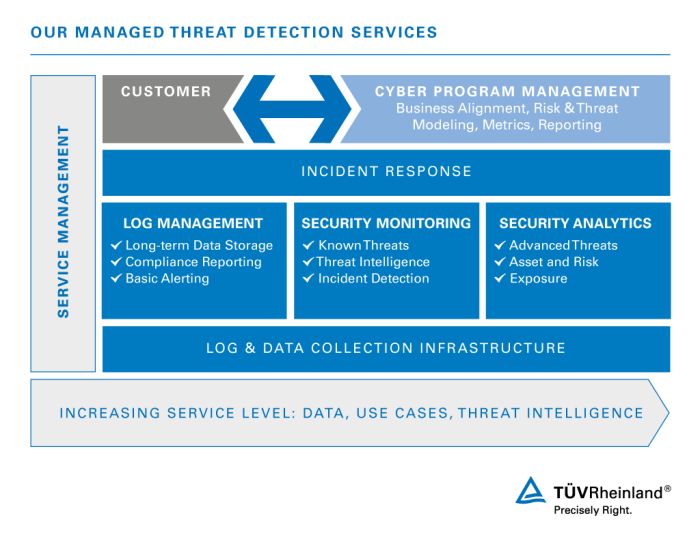
Real-world examples offer compelling evidence of the effectiveness of robust RMM security features in preventing and mitigating cyberattacks. These case studies highlight not only the capabilities of specific RMM platforms but also underscore the importance of proactive security measures in today’s threat landscape. Examining these scenarios provides valuable insights into best practices for securing managed networks.
Let’s dive into both a hypothetical scenario and some real-world examples to illustrate the impact of effective RMM security.
Hypothetical Case Study: Preventing a Ransomware Attack with ConnectWise Automate
Imagine a small accounting firm, “Numbers & Co.”, relying on ConnectWise Automate for their RMM needs. One evening, a sophisticated phishing email targeted an employee, attempting to deliver a ransomware payload. However, ConnectWise Automate’s endpoint detection and response (EDR) module immediately flagged the suspicious activity. The automated response system, configured to quarantine infected files and block malicious processes, swiftly contained the threat before it could encrypt any data.
The integrated patching functionality ensured that all systems were up-to-date, further preventing exploitation of known vulnerabilities. The incident was logged and reported, allowing Numbers & Co. to take further preventative steps. The swift action of ConnectWise Automate prevented a potentially crippling ransomware attack, saving the firm significant time, money, and reputational damage. The automated response prevented data loss and minimized business disruption.
Real-World Case Studies: Demonstrating RMM Security Effectiveness
Several publicly available case studies demonstrate the effectiveness of RMM solutions in mitigating cyberattacks. While specific details are often redacted for confidentiality reasons, the core takeaways consistently emphasize the value of proactive security.
Unfortunately, detailed, publicly available case studies with specific vendor attribution are rare due to confidentiality agreements. However, the following points illustrate common themes found in successful security interventions involving RMM tools:
- Early Threat Detection: Many case studies highlight the ability of RMM tools to detect suspicious activity, such as unusual login attempts or unauthorized software installations, at a very early stage, enabling rapid response and mitigation.
- Automated Patching Prevention: Proactive patching, often a core feature of RMM platforms, has been repeatedly shown to prevent attacks by eliminating known vulnerabilities that malicious actors could exploit. This prevents many attacks before they can even begin.
- Rapid Response and Containment: The ability of RMM to quickly isolate infected systems, block malicious processes, and initiate remediation actions significantly reduces the impact of successful attacks. This is particularly important in ransomware scenarios.
- Centralized Monitoring and Management: The centralized view offered by RMM platforms allows IT teams to monitor multiple endpoints effectively, proactively identify potential threats, and respond swiftly across the entire network.
Key Lessons Learned and Best Practices
The consistent success demonstrated in these (hypothetical and implied real-world) case studies emphasizes several crucial best practices for leveraging RMM security effectively:
Implementing a robust RMM solution is only part of the equation. Proper configuration, regular updates, and staff training are essential for maximizing its effectiveness.
- Proactive Patch Management: Regular and automated patching is paramount to eliminate vulnerabilities before attackers can exploit them. This should be a cornerstone of any RMM security strategy.
- Endpoint Detection and Response (EDR) Integration: Integrating EDR capabilities with your RMM provides a significant layer of protection by enabling real-time threat detection and automated response.
- Security Awareness Training: Educating employees about phishing scams and other social engineering tactics is crucial in preventing initial infection. Human error remains a major vulnerability.
- Regular Security Audits and Assessments: Regularly reviewing your RMM configuration and security posture ensures that your defenses remain effective against evolving threats.
Future Trends in RMM Security
The cybersecurity landscape is constantly evolving, with new threats emerging at an alarming rate. This necessitates a continuous adaptation in Remote Monitoring and Management (RMM) security solutions to stay ahead of the curve and protect businesses from increasingly sophisticated attacks. RMM vendors are actively developing and implementing advanced technologies to meet these challenges, focusing on proactive threat detection and automated response mechanisms.The convergence of artificial intelligence (AI), machine learning (ML), and automation is revolutionizing RMM security.
This integration allows for faster and more accurate threat detection, reducing the window of vulnerability and minimizing the impact of potential breaches. Moreover, automated responses significantly reduce the workload on IT teams, enabling them to focus on strategic initiatives rather than reactive firefighting.
AI-Powered Threat Detection and Automated Response
AI and ML algorithms are becoming integral components of modern RMM platforms. These algorithms analyze vast amounts of data from various sources, including endpoint devices, network traffic, and security logs, to identify patterns and anomalies indicative of malicious activity. This proactive approach allows for the detection of threats before they can cause significant damage, significantly improving the overall security posture of managed systems.
For example, an AI-powered RMM system might detect unusual login attempts from geographically disparate locations, immediately flag them as suspicious, and automatically initiate a lockout to prevent unauthorized access. Furthermore, automated response capabilities, such as quarantining infected files or isolating compromised devices, minimize the impact of detected threats. This reduces the need for manual intervention, streamlining incident response and accelerating remediation efforts.
Enhanced Endpoint Detection and Response (EDR) Integration
RMM platforms are increasingly integrating robust EDR capabilities to provide a more comprehensive view of endpoint security. This integration goes beyond basic antivirus protection, offering advanced threat hunting, behavioral analysis, and forensic investigation capabilities. For instance, an integrated EDR system can detect and respond to fileless malware attacks, which are increasingly difficult to detect using traditional methods. The synergy between RMM and EDR creates a holistic security approach that leverages the strengths of both technologies.
This enables faster identification and neutralization of threats, minimizing disruption to business operations. Imagine a scenario where a sophisticated phishing campaign delivers malware to an endpoint. The integrated RMM-EDR system detects the malicious activity, isolates the compromised device, and automatically initiates a rollback to a previous clean state, limiting the damage and speeding up recovery.
Predictive Security Analytics and Risk Assessment
The future of RMM security lies in proactive threat prevention. This involves leveraging predictive analytics to anticipate potential threats based on historical data, current trends, and external threat intelligence feeds. RMM vendors are incorporating advanced analytics engines to assess the risk profile of managed environments and identify vulnerabilities before they are exploited. This allows IT teams to prioritize mitigation efforts, focusing on the most critical risks.
For example, by analyzing vulnerability scan data and threat intelligence feeds, an RMM system can predict the likelihood of a specific exploit being used against a particular system, allowing administrators to patch the vulnerability proactively before an attack occurs. This proactive approach significantly reduces the attack surface and strengthens overall security.
